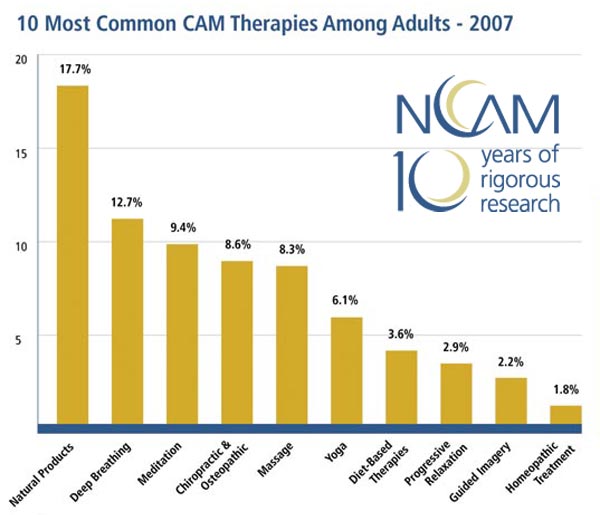
The National Center for Complementary and Alternative Medicine (NCCAM) is this year celebrating 10 years of medical research at NIH, notes Dr. Josephine Briggs, NCCAM Director. About four out of every 10 Americans use some form of CAM.
Photo: NCCAM
This year, the National Center for Complementary and Alternative Medicine (NCCAM) celebrates its 10th anniversary. We explore complementary and alternative medicine (CAM) using rigorous research to provide reliable information to the public and health professionals. Since our beginning, we have made great progress developing a growing body of evidence about CAM therapies.
People can use this information to make informed decisions about their healthcare. This is important because about four out of 10 U.S. adults depend upon some form of CAM to treat various health conditions or maintain overall well being. They turn to CAM most to relieve back and neck pain, arthritis or other recurrent problems conventional medicine often fails to remedy.
In this special section, you will read about who uses CAM, how it can alleviate low back pain, how an ancient Chinese treatment works for some of today's common ailments, and why it is important to tell your health care providers about your use of CAM. We hope this information will be interesting and useful, and that you will turn to our Web site www.nccam.nih.gov for more information.
Josephine P. Briggs, M.D.
Director, National Center for Complementary and Alternative Medicine
What is CAM?
CAM is a group of diverse medical and health care systems, practices, and products not generally considered to be part of conventional medicine. The various types of CAM therapies are grouped as follows:
- Natural products use substances found in nature such as herbs and botanicals.
- Energy medicine involves the use of magnetism or biofields (energy fields believed by some to surround and penetrate the body). Examples include magnet therapy, healing touch, and Reiki (life energy).
- Manipulative and body-based practices involve manipulating or moving one or more body parts. Examples are massage, chiropractic care, osteopathic manipulation, and reflexology.
- Mind-body medicine focuses on ways to harness emotional, mental, social, spiritual, and behavioral factors to affect a person's health. Examples are meditation, hypnosis, and yoga.
- Whole medical systems are built upon complete systems of health theory and practice. Some have evolved apart from, and earlier than, conventional Western medicine. Examples are homeopathy, traditional Chinese medicine, and Ayurvedic medicine.
Use of CAM in the United States

Source: Barnes, PM; Bloom, B; Nahin, R. CDC National Heath Statistics Report #12. Complementary and Alternative Medicine Use Among Adults and Children: United States, 2007. December 2008.
Each year, millions of Americans use some form of CAM. In fact, 38 percent of American adults and approximately 12 percent of U. S. children use CAM, according to the 2007 National Health Interview Survey.
"Millions of Americans every year are turning to complementary and alternative medicine," says Richard L. Nahin, Ph.D., MPH, Acting Director of the Division of Extramural Research, who helped design the survey.
The most common reasons people use CAM are to treat back, neck, and joint pain, arthritis, and anxiety.
